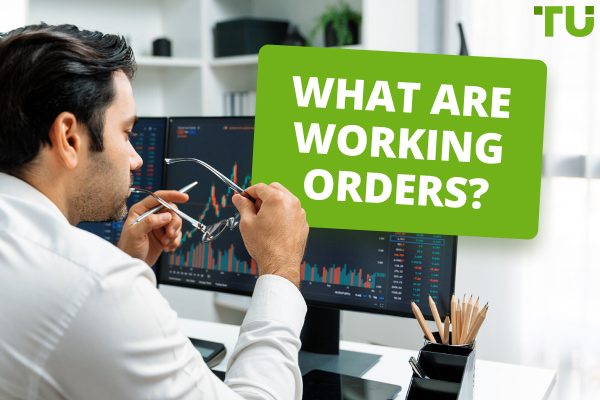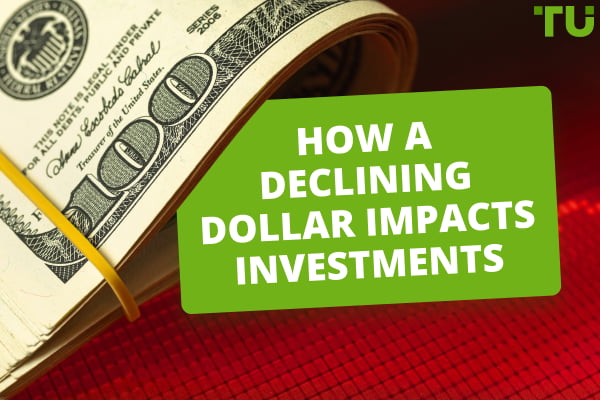Short Selling: How to Make Money And Not Lose

Top commission-free stock broker - eToro
Short selling can be a risky but potentially profitable trading strategy for experienced investors. This requires a good understanding of market dynamics, proper timing and a sound risk management system.
Everyone knows you make money in the stock market when stock prices rise. Not as widely known is the fact you can also make money when stock prices decline. When you buy a stock expecting it to go up in value, you go “long” on the stock. If you think a stock is overpriced and expect it to decline in value, you can “short” the stock. With the ability to buy stocks for their upside potential and short stocks for their downside potential, you have more trading options for making money, but the risks are more significant when shorting a stock.
How Short Selling Works
Selling a stock short is almost as straightforward as buying a stock. The only complication is that when you sell a stock short, you must borrow the stock from your broker so you can sell it. Brokers are happy to lend you the stock if they have it on hand. But to do so, you need to open a margin account. It is your margin account that acts as a form of collateral, which backs the short position to ensure the stock will be returned in the future.
Regulations require short sellers to have 150% of the value of the short position held in a margin account. For example, if the stock you short has a value of $20,000, you would need to have $30,000 in your account to execute the transaction. This provides the broker with some security if the trade goes against you (the stock price increases) and results in a loss.
With your margin account funded, you can execute your sell order using the stock borrowed from the broker. You place the order as you would when buying a stock, except you check the “short sale” box. When you’re ready to repurchase the stock, you check the “buy to cover” box. For a short sale, stocks must be sold in round lots of 100 shares.
Best stock brokers
How You Make Money with a Short Sale
If the stock price drops and you are prepared to lock in a profit, you then “cover” the short sale by purchasing the stock at the lower price. Your profit is the difference between the price at which you sold the stock and the price at which you repurchased it. The stock is then returned to the broker when the transaction is finalized. For example, if you sold 100 shares at $50 and then repurchased them at $40, your profit is $10 a share, or $1,000.
How You Can Lose Money with a Short Sale
If the share price increases after you short the stock, you are in a loss position. You won’t actually lose money unless you buy the stock back at a higher price than what you sold it. You could hold on to your short position in hopes the stock eventually declines, but that could extend your losses if it doesn’t. When it reaches the point where the potential loss exceeds the funds in your margin account, you will be forced to either add more funds or repurchase the stock at the higher price.
The Real Risks of Short Selling
Stock investors understand the risks of owning stocks. They know that if the stock price declines, they could end up selling it for a loss. But what stock buyers have working for them is that, historically, stock prices have consistently trended up. They may experience some temporary pullbacks, but stocks appreciate in value over time. When you short a stock, you are betting against that powerful, long-term trend.
When buying stocks, investors also know they can’t lose more than their investment. In other words, a stock can’t go below zero. However, with a short sale, your losses can far exceed your investment because there is no limit to how high a stock price can climb. Because you are using borrowed money (through the margin account), if the stock price jumps suddenly and you are required to put up more funds, your potential losses can be infinite.
That’s what happened with the GameStop fiasco a couple of years ago, in which prominent fund managers were shorting the stock, expecting the company to go out of business. Then, a group of amateur investors started buying the stock in large quantities, driving the stock price higher. This created a “short squeeze,” forcing the short sellers to cover their positions or risk losing more money. Their actions drove the stock price even higher, resulting in billions of dollars in losses for the short sellers.
That’s an extreme example of how short selling can work against you. However, under any circumstance, short selling is risky speculation at best. Still, if you’re willing and able to tolerate the risk and act correctly, it can be highly profitable.
Glossary for novice traders
-
1
Broker
A broker is a legal entity or individual that performs as an intermediary when making trades in the financial markets. Private investors cannot trade without a broker, since only brokers can execute trades on the exchanges.
-
2
Trading
Trading involves the act of buying and selling financial assets like stocks, currencies, or commodities with the intention of profiting from market price fluctuations. Traders employ various strategies, analysis techniques, and risk management practices to make informed decisions and optimize their chances of success in the financial markets.
-
3
Short selling
Short selling in trading involves selling an asset the trader doesn't own, anticipating its price will decrease, allowing them to repurchase it at a lower price to profit from the difference.
-
4
Investor
An investor is an individual, who invests money in an asset with the expectation that its value would appreciate in the future. The asset can be anything, including a bond, debenture, mutual fund, equity, gold, silver, exchange-traded funds (ETFs), and real-estate property.
-
5
Social trading
Social trading is a form of online trading that allows individual traders to observe and replicate the trading strategies of more experienced and successful traders. It combines elements of social networking and financial trading, enabling traders to connect, share, and follow each other's trades on trading platforms.
Team that worked on the article
Richard has over 30 years of experience in the financial services industry and has written extensively on a broad range of financial and investment topics. He is a contributor to many online publications, including Investopedia and Forbes, and his weekly personal finance columns appear on the websites of more than 100 community and regional banks. Richard has also edited or ghostwritten more than a dozen books.
Dr. BJ Johnson is a PhD in English Language and an editor with over 15 years of experience. He earned his degree in English Language in the U.S and the UK. In 2020, Dr. Johnson joined the Traders Union team. Since then, he has created over 100 exclusive articles and edited over 300 articles of other authors.
Mirjan Hipolito is a journalist and news editor at Traders Union. She is an expert crypto writer with five years of experience in the financial markets. Her specialties are daily market news, price predictions, and Initial Coin Offerings (ICO).












